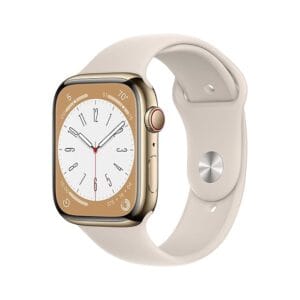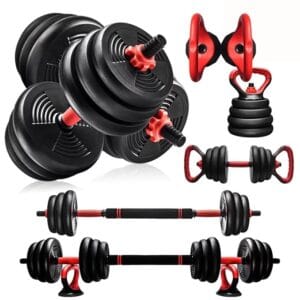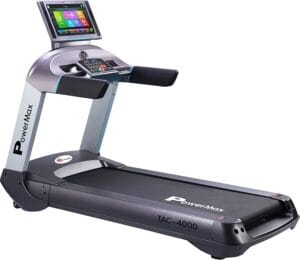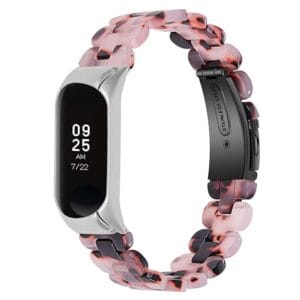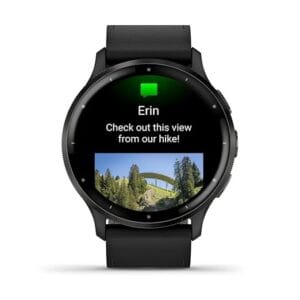7 Shocking Health Benefits
of Losing Belly Fat After 40
Empowering Women Over 40 with Smart Choices for a Healthier Tomorrow

Introduction
7 Proven Health Benefits of Losing Belly Fat After 40isn’t just about looks — for many women, it signals deeper changes in your body. Hormonal shifts, a slower metabolism, and a hectic lifestyle can all cause stubborn belly fat that refuses to budge.
But here’s the truth most people won’t tell you —
👉 You can lose belly fat after 40 — without starving yourself or spending hours at the gym.
In fact, by understanding how your body works at this stage in life and making a few smart adjustments to your daily habits, you can see real, lasting results.
This blog will walk you through:
✅ What really causes belly fat after 40
✅ Simple strategies that actually work
✅ Mistakes to avoid if you want a flat belly fast
So if you’re ready to feel confident in your clothes again, boost your energy, and take control of your body — you’re in the right place.
Top Metrics to Track for Belly Fat Loss for Women Over 40
7 Shocking Health Benefits of Losing Belly Fat After 40
If you’re serious about 7 Proven Health Benefits of Losing Belly Fat After 40, you can’t rely on the scale alone. Your body is going through hormonal changes, so tracking the right metrics is the key to staying motivated and seeing real progress.
Here are the top metrics every woman over 40 should track:
🔸 1. Waist Circumference (in inches/cm)
Why it matters: Belly fat is dangerous because it surrounds internal organs.
Use a soft measuring tape and track it weekly.
A waistline over 35 inches (88 cm) may indicate high visceral fat in women.
🔸 2. Body Fat Percentage
Don’t just lose weight — lose fat!
Use a smart scale or body composition monitor to check fat vs muscle.
Ideal range for women over 40: 21–33%.
🔸 3. Energy Levels
Fatigue is a red flag for hormonal imbalances or poor nutrition.
Ask yourself: Do I feel energized throughout the day?
Track it with a daily journal or habit tracker app.
🔸 4. Bloating & Digestion
Belly bloat can mimic fat gain.
Pay attention to how you feel after meals.
Track foods that cause bloating or gas — they might be the hidden culprits!
🔸 5. Mood & Stress Levels
High cortisol = stubborn belly fat.
Use a simple 1–10 scale to track daily stress.
Deep breathing, walking, or yoga can lower stress and belly fat.
🔸 6. Sleep Quality (Not Just Duration)
Women over 40 often struggle with sleep due to hormonal shifts.
Track how rested you feel, not just hours slept.
Aim for 7–9 hours of uninterrupted sleep.
🔸 7. Strength & Stamina
Track how many pushups, squats, or steps you can do in a week.
Strength training boosts metabolism and reduces belly fat faster than cardio alone!
✅ Pro Tip:
Start with just 3–4 metrics, and track them weekly in a simple spreadsheet or habit tracker app like HabitShare, Google Sheets, or even a paper journal. Small changes lead to big results.
7 Proven Health Benefits of Losing Belly Fat After 40isn’t just about looks — for many women, it signals deeper changes in your body. Hormonal shifts, a slower metabolism, and a hectic lifestyle can all cause stubborn belly fat that refuses to budge.
But here’s the truth most people won’t tell you —
👉 You can lose belly fat after 40 — without starving yourself or spending hours at the gym.
In fact, by understanding how your body works at this stage in life and making a few smart adjustments to your daily habits, you can see real, lasting results.
This blog will walk you through:
✅ What really causes belly fat after 40
✅ Simple strategies that actually work
✅ Mistakes to avoid if you want a flat belly fast
So if you’re ready to feel confident in your clothes again, boost your energy, and take control of your body — you’re in the right place.
🩸 Menstrual and Reproductive Health Over 40: What Women Need to Know
Understanding your menstrual and reproductive health is absolutely essential, especially for women over 40. As you move through perimenopause and into menopause, your cycle often becomes a powerful indicator of what’s happening inside your body.
Here are key things to track regularly:
Cycle length & regularity
Is your period coming sooner or later than usual? A shift could indicate hormonal changes, stress, or even thyroid issues.Flow intensity
A heavier or lighter flow than usual might signal estrogen imbalances or uterine fibroids.Spotting or missed periods
Occasional spotting or skipped periods could be normal during perimenopause, but consistent irregularity needs attention.PMS symptoms
Track symptoms like mood swings, bloating, or breast tenderness. These often intensify during hormonal transitions and may affect sleep or motivation for fitness.Ovulation signs
If you’re still ovulating, monitoring changes in cervical mucus or basal body temperature helps understand fertility and hormone status.
💡 Tip: Use a simple app or journal to track these signs. It helps you see patterns and discuss specifics with your doctor if needed.
Why it matters:
Monitoring menstrual and reproductive health not only supports better overall wellness, but it also helps tailor your fitness, nutrition, and even stress management approaches as your body changes.
🏃♀️ Activity & Fitness Tips for Belly Fat Loss in Women Over 40
Understanding your daily movement and physical fitness is essential for long-term health—especially for women over 40. As your metabolism slows and muscle mass naturally declines with age, tracking activity levels becomes more than just about weight—it’s about energy, strength, and longevity.
Here’s what women should track regularly:
👣 Daily Steps: Aim for 7,000–10,000 steps per day to stay active and support a healthy heart.
WalkSmart Fitness Tracker Watch
👉 Recommended Product: Track steps, heart rate & sleep. Best for women over 40.
Track steps, heart rate & sleep. Best for women over 40.🏋️♀️ Strength Training: Track resistance workouts at least 2–3 times a week to preserve muscle and bone strength.
👉 Recommended Product:Home Dumbbell Set for Women
 – Compact, colorful & perfect for beginners.
– Compact, colorful & perfect for beginners.💓 Cardio Sessions: Include moderate to intense cardio like brisk walking, cycling, or swimming for 150 minutes per week.
👉 Recommended Product:
Compact Treadmill for Home Use – Foldable, low-noise, and great for daily use.
Foldable, low-noise, and great for daily use.📈 Progress Metrics: Use fitness apps or wearables to log your workouts, reps, and progress.
👉 Recommended Product:
Mi Smart Band 6 – Affordable, waterproof, and tracks multiple activities.
“What gets measured gets improved.” By paying attention to your activity and fitness stats, you empower yourself to make better health decisions every day.
😴 Sleep & Stress Management for Belly Fat Loss in Women Over 40
Struggling to wake up refreshed? Feeling anxious all the time?
You’re not alone! As women cross 40, hormonal shifts and daily stress can drastically impact sleep quality and emotional balance. Tracking your sleep and stress isn’t just helpful—it’s essential!
🛌 Best Smartwatch to Track Sleep & Stress
Looking for a smart companion to monitor your rest and stress levels?
Here’s a highly-rated option on Amazon:
💡 Fitbit Charge 5 Advanced Fitness & Health Tracker
– Tracks Sleep Stages, Stress Management Score, Heart Rate Variability & More
👉 Elegant design + built-in tools to calm your day and improve your nights.
🔗 Check Price on Amazon
🛍️ Buy Now
“I’ve been using it for 3 weeks now and finally understand why I wake up tired!” – Verified Amazon Review
☁️ Why This Matters
By analyzing your sleep patterns and stress responses, you’ll learn:
When your body actually rests
How stress is affecting your heart
What habits ruin your deep sleep
This awareness helps in designing better nighttime routines and reducing cortisol levels naturally.
❤️ Heart Health & Belly Fat Loss: What Women Over 40 Must Track
Heart Health: The Silent Strength You Must Track
7 Proven Health Benefits of Losing Belly Fat After 40
As women age—especially after 40—the risk of heart-related conditions increases due to hormonal shifts, lifestyle habits, and stress. Monitoring heart health isn’t just about avoiding serious conditions; it’s about taking proactive control of your energy, stamina, and long-term wellness.
🩺 Why It Matters
Tracking heart rate, blood pressure, and cholesterol levels helps detect potential issues early and allows timely action. Poor heart health can lead to fatigue, shortness of breath, or even silent heart attacks—more common in women than you might think.
🛒 Recommended Tools for Heart Monitoring
1. Omron Platinum Blood Pressure Monitor
✅ Highly accurate | Easy to use | Bluetooth sync with mobile app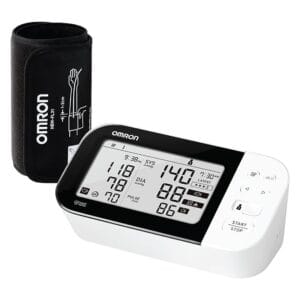
Track your blood pressure at home with clinical precision.
👉 Check Price on Amazon
2. Fitbit Charge 6
💓 Heart rate tracking | Sleep & stress insights | Lightweight & stylish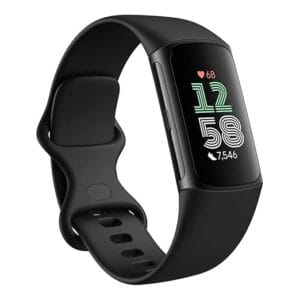
Get 24/7 heart rate monitoring and detailed health reports right on your wrist.
👉 Buy Now on Amazon
3. AliveCor KardiaMobile Personal EKG
📈 Instant EKG in 30 seconds | Compact & smartphone compatible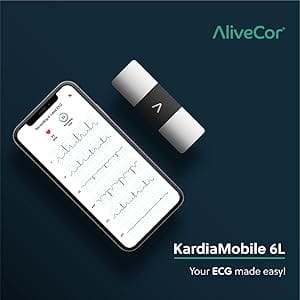
Perfect for detecting irregular heartbeats or AFib from home.
👉 Check Latest Price
✅ Pro Tip:
Combine wearable trackers with lifestyle changes like low-sodium diets, daily walks, and deep breathing exercises to naturally support heart function.

Wristband Stress & Health Monitor – Modern Women's Wellness
- 💡 Monitors heart rate variability for stress tracking
- 📱 Syncs with Apple & Android wellness apps
- 🔋 Long battery life + sleek, low-profile design
🌟 How to Use Wearables Effectively for Belly Fat Loss in Women Over 40
- Smart wearables are powerful tools—but only if you know how to make the most of them. Here’s how women over 40 can use wearables intelligently for lasting health benefits:
- ✅ 1. Set Clear Health Goals
- Before using any device, define what you want to track:
– Steps? Sleep? Heart Rate? Menstrual cycles?
Having a goal ensures your wearable becomes a health partner, not just a gadget. - ✅ 2. Sync Daily for Accurate Data
- Most wearables sync via Bluetooth to your smartphone.
Make it a habit to sync data every day so you can monitor your trends and adjust your lifestyle accordingly. - ✅ 3. Use Reminders & Alerts Wisely
- Many wearables allow custom alerts—like reminding you to hydrate, walk, stretch, or meditate.
💡 Tip: Turn on stress or inactivity alerts to stay mindful throughout the day. - ✅ 4. Track Sleep for Hormonal Balance
- Especially for women over 40, quality sleep = balanced hormones.
Wearables with sleep-tracking help identify patterns so you can improve your nightly routine. - ✅ 5. Connect With Health Apps
- Link your wearable to apps like:
– Apple Health
– Google Fit
– Fitbit
– MyFitnessPal
This creates a full wellness ecosystem and gives you personalized feedback.
📲 Syncing with Apps
One of the most powerful features of modern wearables is their ability to sync with health apps for deeper insights and goal tracking. Whether you're using an Apple Watch, Fitbit, Garmin, or Amazfit, syncing your wearable with a reliable app can help you:
- Track sleep, steps, and heart rate in real-time
- Monitor progress over weeks and months
- Receive alerts for irregular patterns or inactivity
- Set personalized wellness goals based on your data
Most apps offer easy Bluetooth syncing and integrate with major platforms like Apple Health, Google Fit, MyFitnessPal, and Samsung Health.
🔥 Recommended App
Try syncing your wearable with Fitbit Premium or Apple Health+ for advanced health insights.
🔗 Try Now on Amazon💗 Cycle Syncing Workout – Balance Hormones Naturally
Women's bodies go through four distinct phases each month—menstrual, follicular, ovulatory, and luteal. Adapting your workouts to match these phases helps you feel energized and reduce hormonal imbalance symptoms like bloating and fatigue. This is called cycle syncing.
- Menstrual Phase: Restorative yoga, walking.
- Follicular Phase: Light cardio, strength training.
- Ovulatory Phase: HIIT, intense workouts.
- Luteal Phase: Pilates, moderate movement, stretching.

🌟 Smart Fitness Tracker Watch for Women
Track your sleep, cycle, heart rate, and activity to sync your workout with your monthly cycle. Lightweight, stylish, and water-resistant.
🔗 Check Price on Amazon
💤 Sleep Optimization with Apple Watch
Struggling with inconsistent sleep? The Apple Watch helps you unlock restful nights by tracking your REM, deep, and light sleep stages. Integrated with the Sleep app, it lets you visualize your trends, set goals, and wake up refreshed with a silent smart alarm.
- Advanced sleep stage tracking
- Smart haptic alarm to wake at optimal times
- Integrates with Apple Health, iPhone & Fitness+
😌 Stress Management tips
🔍 HRV-Guided Recovery: Understand Your Body’s Stress Signals
Why It Matters:
Your Heart Rate Variability (HRV) reveals how well your body handles stress. When HRV drops below 20 ms (on WHOOP’s scale), it signals chronic stress and poor recovery. This can impact your sleep, focus, and long-term health.
How Smart Wearables Help:
Devices like WHOOP 4.0 automatically track HRV 24/7 and provide personalized recovery scores. When your recovery score dips below 33%, WHOOP recommends rest days or lighter workouts — helping prevent burnout before it starts.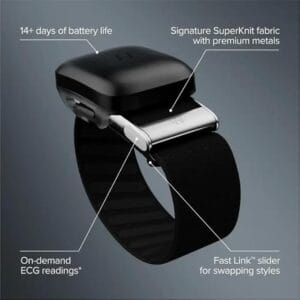
Affiliate Tip:
✅ Want to optimize performance and avoid overtraining? Get WHOOP 4.0 with 30-day free trial →
🧘♀️ Biofeedback Breathing: Instantly Calm Your Nervous System
Why It Matters:
Coherent breathing (slow 5.5-second inhales and exhales) improves vagal tone and reduces anxiety in just 90 seconds, as per NIH studies.
How Wearables Help:
The Apple Watch’s Breathe App gently guides your breathing using haptic feedback — a subtle vibration that keeps you in rhythm.
📌 Pro Tip: Practice during peak cortisol times (8–9 AM or 6–7 PM) for maximum relaxation and hormonal balance.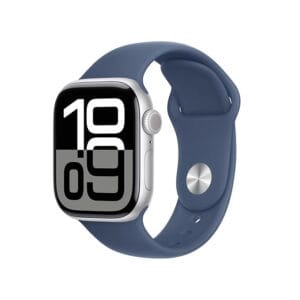
Affiliate Tip:
✨ Improve your daily calm with guided breathing. Explore Apple Watch Series 10 →
🏃♂️ Garmin Venu 3: All-in-One Stress + Recovery Companion
Why It Matters:
The Garmin Venu 3 offers advanced stress tracking, HRV insights, energy monitoring, and guided meditation — all in a premium smartwatch with stunning AMOLED display.
What Makes It Unique:
Tracks HRV overnight and offers Body Battery™ scores to guide activity/rest.
Built-in guided breathing and nap detection — great for high performers and busy professionals.
Affiliate Tip:
💡 Ready to upgrade your wellness journey? Shop Garmin Venu 3 now →
Final Insight: Use Smart Data, Not Just Smart Devices
Wearables can reveal hidden stress patterns — but the real power lies in actionable insights. Sync your data daily, look for trends, and match tools with your lifestyle and biological cycles. For deeper issues like PMS or anxiety disorders, always combine data with expert advice.
🧠 Overcoming Wearable Tech Challenges for Belly Fat Loss in Women Over 40
Data Accuracy
Wearables use sensors to track metrics like heart rate, HRV, sleep stages, and calories burned. However, accuracy may vary based on skin tone, movement, or fit of the device.
🔍 Real-World Example:
While WHOOP 4.0 provides highly sensitive HRV tracking, it may record anomalies if worn too loose during intense workouts. Fitbit may occasionally misclassify sleep stages if your bedtime routine isn’t consistent.
✅ How to Overcome It:
Ensure a snug but comfortable fit on your wrist or bicep.
Calibrate your device regularly (e.g., syncing with resting heart rate).
Cross-reference with manual readings or professional devices for critical health metrics.
Privacy Concerns
Most wearable brands collect sensitive biometric data like sleep cycles, stress levels, and menstrual cycles.
⚠️ Concern:
This data is often stored on cloud servers. Without strong encryption or clear data-sharing policies, there’s a risk of misuse by third parties or insurance companies.
✅ How to Overcome It:
Use wearables from brands with transparent privacy policies (e.g., Garmin has a reputation for minimal data sharing).
Regularly review app permissions.
Avoid linking your wearable data to public health or third-party fitness platforms unless necessary.
Information Overload
Modern wearables offer hundreds of data points daily — HRV, sleep scores, SpO2, step count, workout zones, recovery scores, menstrual tracking, etc.
📉 The Problem:
Too much unfiltered data can lead to anxiety, misinterpretation, or “quantified self” burnout.
✅ How to Overcome It:
Focus on 1–2 key metrics aligned with your health goal (e.g., sleep + HRV for recovery, or step count + calories for fat loss).
Use in-app coaching or summaries (like WHOOP’s recovery score or Fitbit’s Wellness Report) for clear takeaways.
Schedule a weekly review instead of checking stats obsessively every hour.
💡 Pro Tip:
Pair your wearable insights with expert advice — a certified coach, physiologist, or doctor can help interpret the data contextually for better health decisions, especially for chronic issues like hormonal imbalance, PCOS, or long COVID.
🌐Future Trends in Health Tech for Belly Fat Loss in Women Over 40
The landscape of women’s health is evolving at lightning speed — and technology is at the forefront of this transformation. As we move into the future, innovations tailored to the unique needs of women are reshaping the way health is monitored, understood, and managed.
1. AI-Powered Health Insights
Artificial Intelligence (AI) is revolutionizing how women track their health. Smart wearables like Whoop 4.0 and Garmin Venu 3 are using AI to deliver personalized health analytics — from sleep optimization and heart rate variability to stress levels and menstrual cycle predictions. These AI engines don’t just track — they learn and adapt, providing more accurate, tailored advice every day.
2. Menstrual & Fertility Tech
Apps and devices are becoming more sophisticated in understanding menstrual cycles, fertility windows, and hormonal changes. Devices like Oura Ring and Natural Cycles are integrating temperature tracking, heart rate patterns, and even sleep cycles to help women make smarter reproductive decisions — naturally and non-invasively.
3. Remote Health Monitoring & Telehealth
With the rise of remote care, women can now consult with specialists, monitor chronic conditions like PCOS or thyroid imbalance, and receive prescriptions — all from home. This is especially empowering for women in remote or underserved areas.
4. Mental Wellness Integration
Future wearables are placing a stronger focus on mental health tracking. Emotional states, mood swings, stress levels, and even hormonal imbalances will be assessed through biometrics and behavioral data, helping women proactively manage anxiety, burnout, and emotional health.
5. Personalized Nutrition & Fitness
From smart rings to AI-based nutrition planners, the trend is moving toward bio-individual fitness and nutrition. No more one-size-fits-all — your smart device will soon be able to tell you exactly what to eat and how to train, based on your current body signals and hormonal patterns.
6. Integration with Genomics
Genetic testing kits like 23andMe and AncestryDNA are now beginning to integrate with health wearables, unlocking data-driven insights into hereditary conditions, personalized medicine, and even tailored workout plans — all rooted in your DNA.
🌸 Hormone Sensors: The Next Breakthrough in Women’s Health Tech
In the rapidly evolving world of women’s health technology, hormone sensors are poised to become one of the most transformative innovations. These intelligent biosensors are designed to track and monitor hormone levels in real-time, offering deep insights into women’s physical and emotional wellbeing.
🔬 What Are Hormone Sensors?
Hormone sensors are advanced wearable or implantable devices that can detect fluctuations in key hormones such as:
Estrogen
Progesterone
Cortisol
Luteinizing Hormone (LH)
Follicle-Stimulating Hormone (FSH)
They work by analyzing sweat, interstitial fluid, or blood using microfluidic or non-invasive optical technology, sending data directly to a companion app or smartwatch.
🌿 Why Are They Important?
Hormones regulate everything from menstrual cycles, mood, and metabolism, to sleep and fertility. Fluctuations can often go unnoticed until symptoms worsen. Hormone sensors aim to prevent that by:
🔁 Identifying irregular cycles or early menopause
🤰 Improving fertility planning and ovulation tracking
😌 Tracking hormonal mood swings or PMS
💤 Linking hormone imbalances to poor sleep or fatigue
💡 Real-Life Use Cases
Fertility & Family Planning: Sensors can alert users to ovulation windows more accurately than traditional LH strips.
Perimenopause Monitoring: Track declining estrogen over time to better prepare for menopause.
Stress & Cortisol Insights: Help manage anxiety, burnout, or fatigue through real-time cortisol feedback.
🔮 The Future of Hormone Sensors
The next generation of wearables—like smart rings, biosensor patches, or AI-integrated wristbands—may include predictive hormone tracking powered by machine learning. Expect devices that suggest lifestyle changes, nutrition plans, or even notify your doctor when intervention is needed.
🤖 AI Coaches – Your 24/7 Personalized Wellness Partner
In the modern era of women’s health tech, AI Coaches are becoming game-changers. These smart, intuitive virtual assistants go beyond generic advice and deliver hyper-personalized coaching tailored to your goals, lifestyle, and even your hormonal cycle.
Whether you’re aiming to lose belly fat after 40, boost energy, or sleep better, an AI Coach learns from your behavior and adapts in real time.
🔍 Key Benefits:
Personalized Meal Plans & Workouts: AI suggests daily meal and workout routines based on your body metrics, preferences, and progress.
Real-Time Feedback: Get instant corrections on posture, reps, breathing, and more – just like a human coach.
Habit Tracking: Your coach remembers everything – from your hydration to sleep patterns – and sends nudges to keep you on track.
Stress & Mood Support: Integrated with wearables or apps, it can detect stress levels and suggest quick breathing exercises or mindfulness techniques.
🌟 Popular Tools with AI Coaching:
Fitbit Premium – Smart fitness suggestions based on your heart rate and sleep.
Whoop – Offers AI-driven recovery coaching and strain management.
Garmin Venu 3 – Integrated AI support for workout tracking, stress monitoring, and energy optimization.
✅ Pro Tip: Want to try an AI health coach today? Many platforms offer free trials or bundle deals on Amazon. Explore what fits your lifestyle and enjoy tech-powered support every step of your journey.
👩⚕️ Menopause Wearables: Smart Relief for a Natural Transition
Menopause is a natural phase in every woman’s life, but it often comes with disruptive symptoms—hot flashes, night sweats, mood swings, and sleep disturbances. Today, technology is stepping in to provide relief like never before. Menopause wearables are revolutionizing how women manage this transition with grace, comfort, and data-backed confidence.
🔥 What Are Menopause Wearables?
These are smart devices—usually in the form of bracelets, wristbands, or patches—that track, monitor, and respond to menopause symptoms in real-time. Some even offer cooling mechanisms to counter hot flashes, while others track sleep quality, heart rate variability, and skin temperature to help women understand and manage their changing bodies.
🌙 Key Features You’ll Love:
Automatic Hot Flash Detection
Sensors identify body temperature spikes and can trigger immediate cooling responses.Sleep & Stress Monitoring
AI-powered insights help improve sleep patterns and reduce anxiety levels.App Integration
Syncs with mobile apps to offer daily symptom tracking and personalized wellness tips.Discreet & Stylish Designs
Modern wearables look like fashion accessories—no one will know you’re tracking your hormones.
🌟 Popular Menopause Wearables in 2025:
Grace Cooling Bracelet – Provides instant skin cooling when hot flashes hit.
FemSense Patch – Detects ovulation and hormonal shifts during perimenopause.
Thermaband Zone – AI-enabled wearable offering both heating and cooling therapy.
💬 Why This Matters
Menopause no longer needs to be endured in silence or confusion. With smart wearables designed specifically for this life stage, women gain real-time control and insight into their health—improving not just physical comfort, but emotional confidence too.
🌟 Emerging Innovations in Women’s Health Tech
The landscape of women’s health is undergoing a transformative revolution, powered by next-gen technology and personalized wellness. As awareness around female-specific health needs grows, so too does the push for innovation. Let’s explore the most exciting breakthroughs redefining how women track, manage, and optimize their health:
🔬 1. Hormone Monitoring Sensors
Gone are the days of guesswork. Cutting-edge hormone sensors are now offering real-time insights into hormonal fluctuations throughout the menstrual cycle, fertility window, and even perimenopause. These discreet wearables analyze biomarkers such as cortisol, estrogen, and progesterone — empowering women to take control of mood swings, energy levels, and reproductive health.
Example: Devices like Garmin Venu 3 and other smart wearables integrate menstrual tracking with stress monitoring, helping users understand the link between hormones, sleep, and recovery.
🤖 2. AI-Powered Virtual Coaches
AI health coaches are no longer just futuristic concepts — they’re here, and they’re incredibly effective. These digital assistants deliver hyper-personalized workout plans, nutrition suggestions, mental health check-ins, and real-time feedback based on wearable data.
Why it matters: Women can now receive support that adapts to their unique physiology, lifestyle, and health goals — 24/7, without needing a human trainer or coach.
🌡️ 3. Menopause-Friendly Wearables
Hot flashes, night sweats, and sleep disruption during menopause are being addressed with purpose-built wearables. These smart devices detect body temperature changes and offer real-time cooling, guided breathing, and insights for better sleep and mood regulation.
Trend Alert: Brands like Embr Wave and Claira are leading the way, offering elegant wearable relief specifically for menopausal women — a market previously underserved.
💡 4. Predictive Health & Preventive Screening
The future of health is preventive. AI models and smart wearables now analyze trends in heart rate variability, sleep disturbances, skin temperature, and more to detect early warning signs of PCOS, thyroid imbalance, and even breast cancer.
Game-Changer: Early intervention can significantly improve outcomes — and now, with wearable tech, it’s becoming accessible to more women globally.
🚀 5. Personalized Supplementation Devices
Innovative gadgets are now delivering personalized supplements based on biometric scans. These devices sync with your smartwatch, detect nutritional deficiencies, and auto-dispense the right dose of vitamins or minerals — no guesswork, no generic plans.
✨ Conclusion
From AI coaches to hormone-sensing tech, the future of women’s health is intelligent, individualized, and empowering. These innovations are not just enhancing wellness — they’re changing lives.
💪 Empowering Women Through Data
As women's health tech continues to evolve, data-driven insights are redefining how women take charge of their wellness. From smart wearables to AI-powered coaches, personalized care is no longer a luxury—it’s becoming the new normal. These technologies offer not just tracking but transformation.
With greater access to real-time information, women over 40 can now better navigate hormone changes, track their mental health, manage menopause, and live with renewed confidence. When tech aligns with empathy and personalization, it doesn’t just inform—it empowers.
💡 The Future Is Feminine & SmartStill struggling with belly fat?
This next post will help you even more.
This is just the beginning of your flat belly journey. Want to know what’s working for other women like you? Tap below — and let’s keep growing, together.
🎁 Get Your Free 7-Day Flat Belly Plan
No gym. No diet. Just results!

